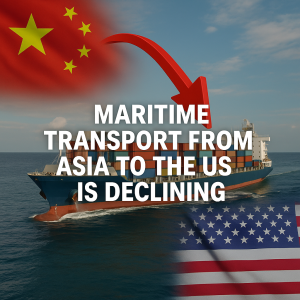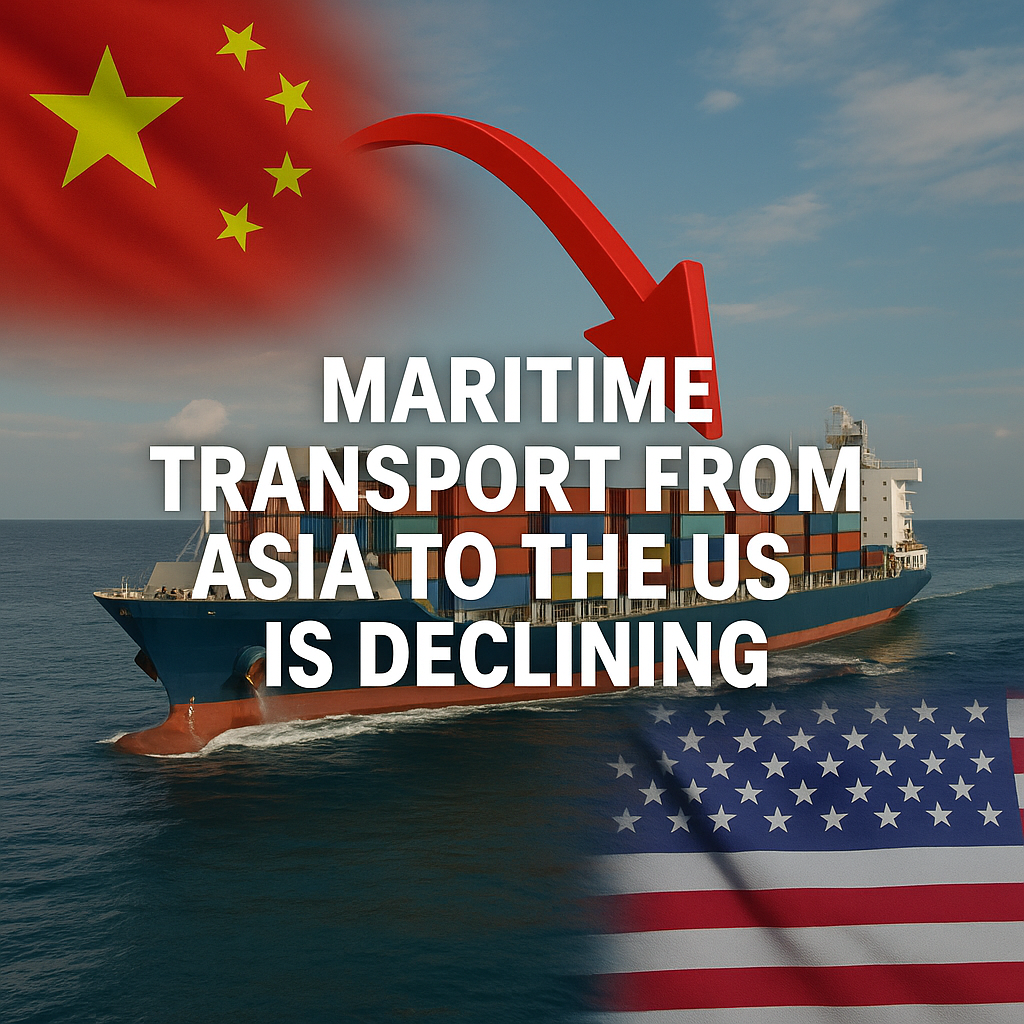
11/17/2025
The contraction was led by the main supplier, China, whose traffic to the United States fell by 14%
President Trump’s sudden imposition of steep tariffs, primarily targeting Asian economies, and his administration’s confrontational “bullying” tactics are destabilizing global commerce. This approach creates profound uncertainty, disrupting international supply chains, snarling shipping logistics with unpredictable trade flows, and ultimately harming the U.S. economy through higher consumer prices and retaliatory measures from trading partners. Concurrently, this volatility and the weaponization of U.S. economic policy are accelerating a decline in the U.S. dollar’s dominance. In response, major nations like China, Russia, India, the UAE, Iran, and Turkey are actively accelerating their shift away from the dollar, increasingly using their own national currencies or alternatives in bilateral trade to insulate themselves from Washington’s influence and the instability of its trade policies.
Furthermore, in response to such protectionist policies, Asian nations and Global South powers have significantly increased trade and investment among themselves. This strategic pivot away from reliance on the U.S. market fosters new, resilient supply chains and strengthens regional economic blocs, further reconfiguring the global economic order away from Western centrality.
Washington-Container shipping from Asia to the United States (North America Eastbound) saw a sharp decline in October , signaling persistent trade uncertainty. According to data published by Descartes Datamine, total container volume from ten Asian countries and regions bound for the US was 1.69 million TEUs, an 8% decline compared to the same month last year. This marked the second consecutive month of decline year-over-year.
The decline was driven by the main supplier, China, whose traffic to the United States decreased by 14% (some estimates suggest as much as 16.3%) compared to the previous year. However, the picture was mixed: Southeast Asian countries such as Vietnam, Malaysia, and Sri Lanka continued to boost volumes, bucking the trend with double-digit increases. This reflects ongoing adjustments to global supply chains due to tariff dynamics and US trade policy.
Overall, global container traffic to the United States declined 7% year-on-year in October , a moderation that logistics managers also attribute to slowing consumer demand and the frontloading activity that occurred in previous months to avoid potential regulatory uncertainties and seasonal peaks.
References
The Economist. (2024). The new geopolitics of trade: Protectionism and its consequences.
This article analyzes the disruptive impact of U.S. tariff policies on global trade patterns, supply chains, and the stimulus it has provided for regional trade blocs outside the Western sphere.
Reuters. (2024). BRICS nations accelerate de-dollarization drive in trade.
This news piece reports on the concrete steps countries like China, Russia, India, and UAE are taking to use local currencies for commerce, directly linking this trend to a desire to reduce dependence on the U.S. dollar and its associated policies.
Financial Times. (2024). Global South forges new trade routes to bypass Western dominance.
This source covers the increasing volume of trade and investment between Asian and other Global South nations, highlighting it as a strategic reorientation of the global economy away from traditional Western hubs.

